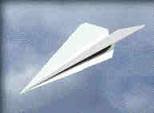As biplanes go, the Stranraer lacked the kind of lines that would steam-up the Ray Bans of most red-blooded aviators. While her comely pair of double D-cup Pegasus engines might have seduced the airplane passions, her hulled fuselage was more gangly than beautiful. But as the indomitable QCA founder Jim Spilsbury wrote in The Accidental Airline, a good read for flyers, sailors or landlubbers alike “….you’re hanging up there over Hecate Straits, 250 miles of the roughest water on the Pacific – all that open water….in case of engine failure, in case of anything else, what sense does it make flying around there with landplanes? “ Spilsbury was quick to point out their seaworthiness – a good ploy in the late 1940s when the idea of over-water flying in a wheel plane gave many of those potential ticket buyers the jitters and a very dry mouth.
Spilsbury’s hunch paid off, and five Stranraers were soon hauling cargo and passengers under the QCA banner. Their bevy of flying boats were not the best-looking girls on the beach, but they were soon kicking sand in the face of the competition vying for the bustling northern route while endearing herself to passengers and pilots alike.
But it was the unmarried pilots who were partaking in another kind of fringe benefit: those lonely fish wives and lumber molls dotted along the coast. Many of QCA’s pilots were ex-RCAF who paid heed to their own kind of scheduled service outside the cockpit. “I’ve never seen anything like it” lamented Spilsbury. “Flying attracted a special group of people because it promised escape and excitement.” One particular pilot really had that special something. Women from up and down the coast would show-up at his Vancouver doorstep – “Here I am!” It would have been the perfect fodder for a 1950’s reality show: The Flying Bachelor. Those rabbit ears on the new black and white Motorola would be tuned to another Casablanca-like dispatch every Thursday night: a foggy wharf, the Stranny bobbing in the background, a farewell single-stemmed rose, tears, and a one-way trip back to Bella Coola. Bye-bye.
Unfortunately, most of the QCA Stranraers which plied our coast also met with a tearful fate. All but one met a watery grave or burned to the water line. In 1983, a contingency from the Canadian Museum of Flight, headed by lifetime member Captain Bill Thompson, made an expedition to Belize Inlet where Stranraer 915/CF-BYJ crashed Christmas Eve of 1949.
After she was plucked from the shoreline, CF-BYJ was stabled in the museum’s hangar barn awaiting restoration. But, alas, airplanes are like high-maintenance lovers; sometimes you just have to let them go. It was a hard loss for the Canadian Museum of Flight, but we sincerely hope the museum in Shearwater Nova Scotia will meet the challenge of restoring her back to glory.
The only physical reminder of a Stranraer left in British Columbia is a lilliputian replica of 920/CF-BXO, The Alaska Queen, which sits in a quiet corner of the Canadian Museum of Flight hangar, painted in the yellow and black livery of Queen Charlotte Airlines.
The life-sized CF-BXO is now part of the permanent collection at the Royal Air Force museum in Hendon, England. When Jim Spilsbury visited Hendon, he was dismayed that any trace of her British Columbia heritage had been erased. Spilsbury later wrote, “I visited her there in 1984, all painted in RAF colours as if she had never been built for the RCAF in Montreal or had a glorious career flying for QCA at all. I tried to bring this to the attention of the museum officials but they obviously didn’t believe a word I said.”
Let’s hope it never happens again because it is always about more than the airplanes. Behind every square inch of fabric wing or metal rivet is a human face with a story to be told.
We can make it happen – with the passionate support of those dedicated to preserving our aviation legacy.
So, the next time an airplane brimming with unique regional significance lands on our doorstop, we can give voice to that human story and it will shout “Here I am…..and I’m here to stay!”
– published in the Winter 2009 issue of Glidepath magazine
(Jim Spilsbury’s quotes courtesy of “The Accidental Airline – Spilsbury’s QCA” by Howard White and Jim Spilsbury. Used with permission from Harbour Publishing. Spilsbury’s books may be ordered at http://www.harbourpublishing.com ).








